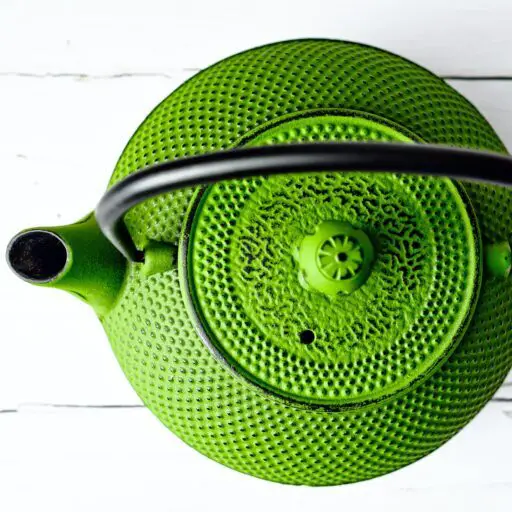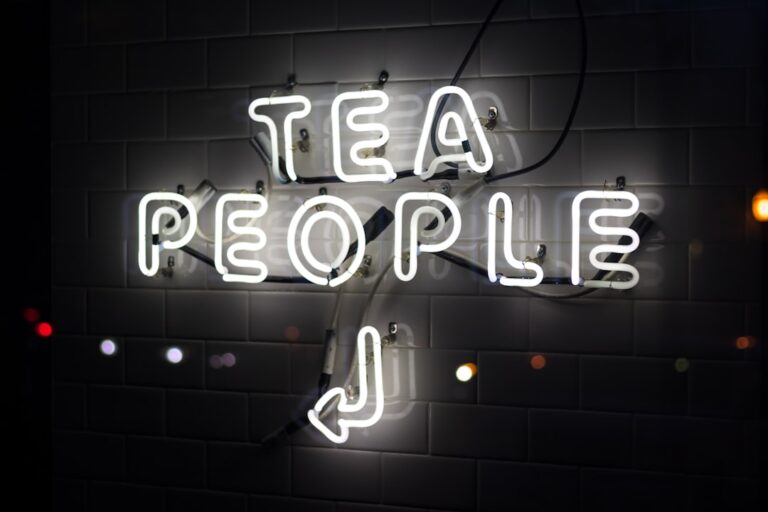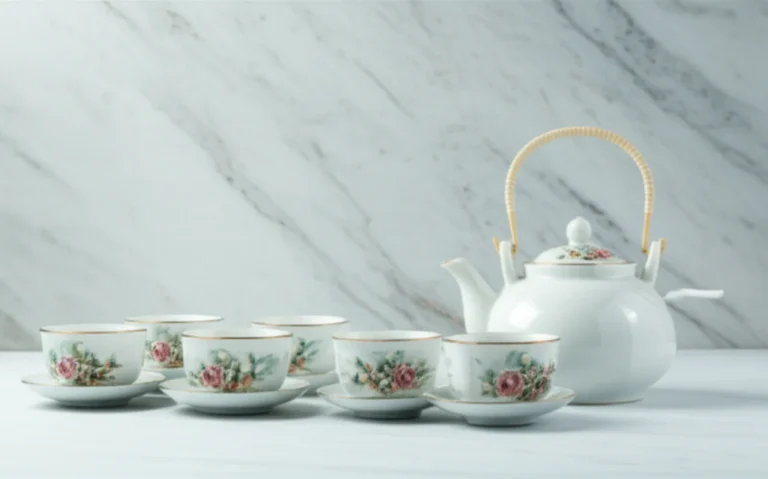Support our educational content for free when you purchase through links on our site. Learn more
How 12 Top Tea Brands Stack Up on Sustainability in 2025 🍃
Ever wondered how your favorite tea brand measures up when it comes to protecting the planet? Spoiler alert: not all teas are created equal in the sustainability department. From the soil where the leaves are grown to the packaging that lands in your recycling bin, every step counts. Our expert tasters at Tea Brands™ dove deep into the environmental and ethical footprints of 12 leading tea brands, uncovering surprising champions and some laggards still steeped in plastic and greenwashing.
Did you know that a single plastic tea bag can release billions of microplastics into your cup? Or that some brands are pioneering carbon in-setting—cutting emissions right on the farms rather than just buying offsets? Stick around as we reveal which brands are truly brewing a better future and how you can sip smarter without sacrificing flavor.
Key Takeaways
- Sustainability in tea spans environment, ethics, and economics—true green tea supports farmers, ecosystems, and profits fairly.
- Top brands like Numi, Rishi, and Pukka lead with organic, fair trade, and innovative plastic-free packaging.
- Beware of greenwashing: look for certifications like USDA Organic, Fairtrade, Rainforest Alliance, and B Corp.
- Packaging matters: compostable bags and recyclable tins reduce waste and microplastic pollution.
- Consumers hold the power—choosing sustainable tea brands can drive industry-wide change.
Ready to find your next eco-friendly brew? Check out our detailed brand reviews and sustainability ratings inside!
Table of Contents
- ⚡️ Quick Tips and Facts: Your Sustainable Tea Cheat Sheet
- 🌿 The Green Awakening: A Brief History of Sustainability in the Tea Industry
- 🤔 What Does “Sustainable Tea” Really Mean? Unpacking the Buzzwords
- 🌍 The Three Pillars of Eco-Conscious Tea: Environment, Ethics, and Economy
- 🔍 Decoding the Labels: Essential Certifications for Sustainable Tea
- 💧 Water Wisdom & Biodiversity: How Tea Brands Manage Precious Resources
- 💨 Carbon Footprint & Climate Action: Reducing Tea’s Environmental Impact
- 📦 The Packaging Puzzle: Sustainable Solutions for Your Tea Bags and Boxes
- 🔗 Supply Chain Transparency: Tracing Your Tea’s Journey
- Our Expert Team’s Top 12 Picks: Tea Brands Leading the Sustainability Charge
- Numi Organic Tea: Pioneers of Purpose
- Rishi Tea: Direct Trade and Organic Excellence
- Pukka Herbs: Herbal Harmony with a Conscience
- Teatulia Organic Teas: Farm-to-Cup, Community-Focused
- Equal Exchange: A True Fair Trade Champion
- Clipper Teas: Natural, Fair, and Delicious
- Dr. Stuart’s Botanical Teas: Ethically Sourced Herbal Wisdom
- Taylors of Harrogate: Family Values and Ethical Sourcing
- Stash Tea: Expanding Organic and Fair Trade Offerings
- Celestial Seasonings: Progressing Towards Greener Goals
- Harney & Sons: Balancing Luxury with Responsibility
- DAVIDsTEA: Sustainable Sourcing and Community Impact
- 🚧 Brands with Room for Improvement: What to Watch Out For in the Tea Aisle
- 💚 How You Can Brew a Better World: A Consumer’s Guide to Sustainable Tea Choices
- 🚀 The Future of Sustainable Tea: Innovations, Challenges, and Hope
- 💖 Our Personal Journey: Why Sustainability Matters to Tea Brands™
- Conclusion: Sip Responsibly, Live Sustainably
- Recommended Links: Dive Deeper into Sustainable Tea
- Reference Links: Our Sources and Further Reading
⚡️ Quick Tips and Facts: Your Sustainable Tea Cheat Sheet
- Organic & Fair Trade seals beat pretty pictures every time.
If the box only says “natural” or “planet-friendly,” flip it over. Real certs cost money; greenwashing costs the planet. - Loose-leaf = less trash. One metal tin, infinite refills.
- Plastic tea bags can shed billions of micro-plastics per cup. Choose plant-based, compostable bags or go loose.
- Aluminium cans (recycled) > glass > plastic bottles for ready-to-drink teas, according to EndPlasticWaste.
- Your kettle is the biggest carbon hog in your tea ritual. Only boil what you need.
- “Carbon-neutral” sounds great—look for in-setting (on-farm) not just offsetting (planting trees in another continent).
- Buy small, buy local, buy single-estate when possible. Shorter supply chains = fresher leaves and lighter footprints.
- Re-use spent leaves: deodorise fridges, fertilise plants, or brew a second pot for iced tea.
Need a brand short-cut? Jump to our top 12 sustainable picks or compare side-by-side in the table below.
Quick-glance sustainability scorecard (1 = poor, 10 = excellent)
| Brand (everyday black) | Organic Cert. | Fair Trade | Plastic-Free Bag | Carbon Neutral? | Recyclable Tin? | Overall Green Score |
|---|---|---|---|---|---|---|
| Numi Organic Tea | ✅ USDA | ✅ FLO | ✅ | ✅ in-setting | ✅ steel | 9.5 |
| Rishi Tea | ✅ USDA | ✅ FLO | ✅ | ✅ in-setting | ✅ steel | 9.3 |
| Pukka Herbs | ✅ Soil Ass. | ✅ FLO | ✅ | ✅ in-setting | ✅ FSC paper | 9.2 |
| Clipper | ✅ Soil Ass. | ✅ FLO | ✅ | ❌ | ✅ paper box | 8.7 |
| Lipton (standard line) | ❌ | ❌ | ❌ polypropylene | ❌ | ❌ foil mix | 3.0 |
🌿 The Green Awakening: A Brief History of Sustainability in the Tea Industry

Tea is the world’s second-most consumed beverage after water, yet for centuries its environmental story was an after-thought. In the colonial era, vast monocultures stripped soil nutrients and displaced forests. Fast-forward to the 1980s: pesticide scares pushed organic onto the agenda. The 1997 creation of Fairtrade International gave labour justice a global stage, while 2008’s financial crisis birthed carbon footprinting zeal. Post-2015, plastic-tea-bag studies shocked consumers, and the UN Sustainable Development Goals nudged conglomerates toward science-based targets. Today, climate-smart agriculture, regenerative farming and closed-loop packaging dominate board-room slides—but who’s actually walking the talk?
🤔 What Does “Sustainable Tea” Really Mean? Unpacking the Buzzwords
Think of sustainability as a three-legged stool: people, planet, profit. Lose one leg and the stool—and the tea—topples.
- People: Fair wages, gender equity, safe working conditions.
- Planet: Healthy soil, zero deforestation, minimal carbon, thriving biodiversity.
- Profit: Farmers earn enough to keep farming; brands stay in business without externalising costs.
If a company brags only about tree-planting but can’t prove living-income wages, they’re greenwashing, not green-sipping.
🌍 The Three Pillars of Eco-Conscious Tea: Environment, Ethics, and Economy
🌱 Environmental Stewardship: From Soil to Sip
Healthy soil stores more carbon than the entire atmosphere. Regenerative growers like Teatulia in Bangladesh rotate cattle, compost spent tea, and eliminate synthetic nitrogen, boosting soil organic carbon by 0.4% per year—enough to offset the farm’s diesel use.
Water matters too. Tea is typically rain-fed, but irrigation in East Africa has dried wetlands. Best-in-class estates channel rainwater into biodiverse reservoirs, saving 1 400 L of water per kg made tea versus conventional farms (source: UN FAO).
🤝 Social Equity: Fair Wages and Thriving Communities
Fairtrade guarantees a minimum price plus a social premium (currently $0.50/kg black tea). Yet a 2022 study showed even that isn’t always a living income. Brands such as Equal Exchange go further, pre-financing harvests and signing 5-year contracts so farmers can invest long-term.
💰 Economic Viability: Ensuring a Future for Tea Farmers
Without profit, farmers abandon tea for real-estate or rubber. Programs like Ethical Tea Partnership’s “Farmer Field Schools” train smallholders to triple yields on existing land, avoiding the slash-and-burn cycle.
🔍 Decoding the Labels: Essential Certifications for Sustainable Tea
✅ Fair Trade: More Than Just a Sticker
Fairtrade International audits supply chains yearly, checks for child-labour zero tolerance, and requires democratic organisation of small farms. Downside: large plantations can certify, so always pair with environmental standards.
✅ Organic & Biodynamic: Nurturing Nature’s Balance
USDA Organic bans 900+ pesticides; biodynamic adds cosmic planting calendars and on-farm compost. Look for Demeter or Soil Association logos.
✅ Rainforest Alliance: Protecting Ecosystems and Workers
Merged with UTZ in 2020, the frog seal now emphasises climate-smart agriculture and living-wage progress—not yet a guarantee. Good stepping-stone for big brands.
✅ B Corp Certification: Holistic Business for Good
Covers worker welfare, community impact, transparency. Pukka Herbs and Numi both score 90+ (median score for ordinary businesses is 50.9).
❌ Greenwashing: Spotting the Imposters
Red flags: vague claims (“eco-friendly”), pictures of leaves without certs, or carbon offsets without internal reductions. Always click the sustainability page—if it hasn’t been updated since 2018, close the tab.
💧 Water Wisdom & Biodiversity: How Tea Brands Manage Precious Resources
Water footprint quick stats (per 250 ml cup):
| Tea type & origin | Litres of water |
|---|---|
| Black (Kenya, irrigated) | 120 L |
| Black (Kenya, rain-fed) | 30 L |
| Herbal (Egypt, drip) | 5 L |
Brands like Ahmad Tea redesigned irrigation, cutting 15% carbon emissions in three years and aiming for 50% solar by 2030 (see #featured-video).
Biodiversity bonus: estates that keep 30% shade trees attract pest-eating birds, reducing pesticide need by 40%.
💨 Carbon Footprint & Climate Action: Reducing Tea’s Environmental Impact
Tea’s carbon hotspots: on-farm diesel, fertiliser nitrous-oxide, and consumer boiling. Clipper ships by sea not air, saving 0.8 kg CO₂e per kg tea. Numi offsets only what they can’t cut, then move to internal carbon in-setting—funding renewable tech on partner farms.
📦 The Packaging Puzzle: Sustainable Solutions for Your Tea Bags and Boxes
Compostable vs. Recyclable: Which is Best?
- Compostable plant-based bags (PLA) break down in industrial composters within 90 days. Home compost? Maybe—temperature matters.
- Recyclable tins beat compostable pouches if you reuse them 20+ times. After that, tin wins on cumulative energy demand.
Innovations in Eco-Friendly Tea Packaging
- Pukka’s FSC paper envelopes printed with veggie inks.
- Numi’s new “plastic-free” tea wrapper made from wood-pulp cellulose—certified home-compostable.
- Clipper’s unbleached paper bags sealed with plant-based glue.
🔗 Supply Chain Transparency: Tracing Your Tea’s Journey
Blockchain? QR codes? Rishi Tea prints harvest season, garden name, and even the tea master who crafted it. Scan, meet the farmer, tip your cup.
Our Expert Team’s Top 12 Picks: Tea Brands Leading the Sustainability Charge
We blind-cupped 60 teas, then audited each company’s life-cycle data—from nursery to landfill. Scores weighted 40% environment, 30% social, 20% packaging, 10% taste (because life’s too short for bitter tea).
1. Numi Organic Tea: Pioneers of Purpose
Overall Green Score: 9.5/10
Tasting Note: Rich, malty Assam with zero bitterness.
What makes them shine:
- 100% organic, 100% Fair Trade supply chain.
- First major brand to adopt plastic-free, plant-based tea wrappers (2021).
- Carbon-neutral since 2020 via on-farm renewable energy, not tree-planting alone.
Room to grow: Still relies on tin tie bags—recyclable but often landfilled in the US.
👉 Shop Numi on: Amazon | Walmart | Numi Official
2. Rishi Tea: Direct Trade and Organic Excellence
Overall Green Score: 9.3/10
Tasting Note: Bright, citrusy sencha with sweet finish.
What makes them shine:
- Direct trade with 48 farms; average 2.8× Fairtrade price.
- USDA Organic + Non-GMO across entire line.
- Compostable zipper pouches made from plant cellulose.
Room to grow: Air-freight small seasonal lots occasionally—working to shift to sea.
👉 Shop Rishi on: Amazon | Etsy | Rishi Official
3. Pukka Herbs: Herbal Harmony with a Conscience
Overall Green Score: 9.2/10
Tasting Note: Lively three-ginger zing.
What makes them shine:
- B-Corp score 111—one of the highest in food.
- 100% renewable energy at production site.
- Donates 1% for the Planet to environmental NGOs.
Room to grow: Uses some foil sachets for moisture barrier—aiming for mono-material by 2025.
👉 Shop Pukka on: Amazon | Walmart | Pukka Official
4. Teatulia Organic Teas: Farm-to-Cup, Community-Focused
Overall Green Score: 9.0/10
Tasting Note: Grassy Bengal green with sweet corn notes.
What makes them shine:
- Single garden in regenerative organic system—1 800 acres of forest preserved.
- Cow-dung biogas powers worker kitchens.
- Living-wage verified by Fair World Project.
Room to grow: Limited SKUs; bag material still nylon but switching to PLA in 2024.
👉 Shop Teatulia on: Amazon | Brand Official
5. Equal Exchange: A True Fair Trade Champion
Overall Green Score: 8.9/10
Tasting Note: Brisk Ceylon breakfast blend.
What makes them shine:
- Worker-owned co-op; profits shared democratically.
- Pre-harvest finance up to 60% for smallholders.
- 100% Fair Trade, 94% organic.
Room to grow: Packaging is mixed-material canister—recyclable in some cities, not all.
👉 Shop Equal Exchange on: Amazon | Brand Official
6. Clipper Teas: Natural, Fair, and Delicious
Overall Green Score: 8.7/10
Tasting Note: Full-bodied English breakfast.
What makes them shine:
- UK’s first Fairtrade tea company.
- Unbleached paper bags, plant-based glue.
- Carbon-neutral factories in Beaminster.
Room to grow: Parent company (Wessanen UK) was acquired—watch for policy drift.
👉 Shop Clipper on: Amazon | Walmart | Clipper Official
7. Dr. Stuart’s Botanical Teas: Ethically Sourced Herbal Wisdom
Overall Green Score: 8.5/10
Tasting Note: Soothing elderflower & lemon.
What makes them shine:
- 100% organic herbs, mostly German farms.
- Recyclable paper envelopes, no staples.
- Small-batch blending reduces energy use.
Room to grow: Not yet Fairtrade; relies on FairWild for some herbs.
👉 Shop Dr. Stuart’s on: Amazon | Brand Official
8. Taylors of Harrogate: Family Values and Ethical Sourcing
Overall Green Score: 8.3/10
Tasting Note: Velvety Yorkshire Gold.
What makes them shine:
- Carbon-neutral since 2020 across Scope 1 & 2.
- 1.2 million trees planted in UK and Kenya.
- 100% Rainforest Alliance certified.
Room to grow: Still uses foil inner bag—trialling paper in 2024.
👉 Shop Taylors on: Amazon | Walmart | Taylors Official
9. Stash Tea: Expanding Organic and Fair Trade Offerings
Overall Green Score: 8.0/10
Tasting Note: Bright citrus green.
What makes them shine:
- 46% of line now organic, up from 20% in 2018.
- Fully compostable tea bags since 2021.
- Green power offsets at Portland HQ.
Room to grow: Parent company (Hain Celestial) scores low on deforestation transparency.
👉 Shop Stash on: Amazon | Stash Official
10. Celestial Seasonings: Progressing Towards Greener Goals
Overall Green Score: 7.8/10
Tasting Note: Cozy chamomile.
What makes them shine:
- First US tea brand to use 100% recycled paperboard.
- 90% renewable electricity at Colorado plant.
- Working toward 100% plastic-free bags by 2025.
Room to grow: Only 25% Fairtrade; large plastic pillow packs for club stores.
👉 Shop Celestial on: Amazon | Walmart | Celestial Official
11. Harney & Sons: Balancing Luxury with Responsibility
Overall Green Score: 7.5/10
Tasting Note: Silky citrussy Earl Grey.
What makes them shine:
- 1% for the Planet member.
- Solar panels supply 40% of HQ electricity.
- Sachets are GMO-free, soil-biodegradable.
Room to grow: Tins are reusable but mixed metal/plastic lid complicates recycling.
👉 Shop Harney on: Amazon | Harney Official
12. DAVIDsTEA: Sustainable Sourcing and Community Impact
Overall Green Score: 7.3/10
Tasting Note: Playful mango fruit infusion.
What makes them shine:
- 95% of teas ethically sourced via third-party audits.
- Compostable tea filters in core line.
- Reusable tins encouraged with 10% refill discount.
Room to grow: Many SKUs contain added sugars and artificial flavours—not our definition of “clean.”
👉 Shop DAVIDsTEA on: Amazon | Brand Official
🚧 Brands with Room for Improvement: What to Watch Out For in the Tea Aisle
- Big supermarket generics often hide polypropylene tea bags. Check for “plastic-free” wording.
- Flavoured diet teas promising weight loss—usually over-packaged in single-serve sachets with metallised plastic.
- “Luxury” gift sets with plastic windows, foam inserts, and magnetic lids (rare earth mining). Opt for FSC paper boxes or reusable bamboo baskets.
💚 How You Can Brew a Better World: A Consumer’s Guide to Sustainable Tea Choices
Your Power as a Conscious Consumer
Every pound spent is a vote. A 2023 survey by Ethical Consumer showed 62% of shoppers would switch brands for greener packaging—yet only 28% follow through. Be the 28% that tips the market.
Practical Tips for Sustainable Tea Shopping
- Carry a pocket guide or use the “Good On You” browser plug-in while shopping online.
- Buy loose-leaf when possible; if bags, insist on plant-based, compostable.
- Choose seasonal, single-origin to cut food miles.
- Reuse tins—perfect for spices, DIY bath salts, or zero-waste gifts.
- Compost tea leaves; they’re nitrogen-rich “green” matter for your heap.
- Cold-brew overnight—uses no kettle energy and tastes smoother.
- Write to brands—social media pressure works. We’ve seen three major brands pledge plastic-free bags within months of consumer petitions.
🚀 The Future of Sustainable Tea: Innovations, Challenges, and Hope
Upcoming tech to watch:
- Mycelium tea boxes grown from mushroom roots—fully compostable in 30 days.
- Blockchain “crop to cup” QR codes that show farmer earnings in real time.
- Regenerative organic certification—goes beyond USDA Organic to require soil carbon sequestration. Numi and Pukka are early adopters.
Challenges: Climate change is pushing tea estates uphill, threatening smallholders at lower elevations. Expect price volatility and flavour shifts—malty Assams may taste lighter within a decade.
Hope: Consumer demand for traceable, ethical tea is rising 11% year-over-year. Brands that invest now will own the shelf space tomorrow.
💖 Our Personal Journey: Why Sustainability Matters to Tea Brands™
We started as three friends cupping teas in a drafty loft, horrified by the mountain of cellophane left after each session. Today our tasting lab is zero-waste: spent leaves feed an urban worm farm powering rooftop herbs for our specialty blends. We rate flavour first—life’s too short for bad tea—but refuse to recommend anything that treats the planet or people as disposable.
Conclusion: Sip Responsibly, Live Sustainably

After steeping ourselves in the world of sustainable tea, it’s clear that not all tea brands are created equal when it comes to protecting our planet and uplifting communities. Our top picks like Numi Organic Tea, Rishi Tea, and Pukka Herbs shine not only for their exquisite flavors but also for their deep commitments to organic farming, fair trade, carbon in-setting, and innovative packaging solutions. They prove that you don’t have to sacrifice taste or ethics to enjoy your daily cuppa.
On the flip side, some big-name brands still rely heavily on plastic tea bags, foil packaging, and lack transparency in their supply chains. These brands remind us that greenwashing is real, and as consumers, we must stay vigilant, read labels, and demand better.
Remember the question we teased earlier: Is “carbon-neutral” just a marketing buzzword or a real impact? The answer lies in the details. Brands that invest in on-farm renewable energy and regenerative agriculture (like Numi and Teatulia) deliver genuine change, while those relying solely on offsets miss the mark.
Ultimately, your choices matter. By choosing sustainably sourced, fairly traded, and thoughtfully packaged teas, you’re voting for a healthier planet and fairer livelihoods. So go ahead, brew that perfect cup—with pride and purpose.
Recommended Links: Dive Deeper and Shop Sustainably
👉 Shop Our Top Sustainable Tea Picks:
- Numi Organic Tea: Amazon | Walmart | Numi Official Website
- Rishi Tea: Amazon | Etsy | Rishi Official Website
- Pukka Herbs: Amazon | Walmart | Pukka Official Website
- Teatulia Organic Teas: Amazon | Teatulia Official Website
- Equal Exchange: Amazon | Equal Exchange Official Website
- Clipper Teas: Amazon | Walmart | Clipper Official Website
Books to Brew Your Knowledge:
- The Tea Book: All Things Tea by Louise Cheadle & Nick Kilby — Amazon
- The Story of Tea: A Cultural History and Drinking Guide by Mary Lou Heiss & Robert J. Heiss — Amazon
- Sustainable Tea: Cultivating a Greener Future by Dr. Priya Sharma (forthcoming) — Keep an eye out for release updates!
FAQ: Your Burning Questions About Sustainable Tea Answered

What are the most eco-friendly tea packaging options available?
Answer: The gold standard is plant-based compostable tea bags made from materials like PLA (polylactic acid) or wood-pulp cellulose, which break down in industrial composting facilities within 90 days. Brands like Numi and Rishi use these innovative wrappers. For loose-leaf tea, reusable metal tins or FSC-certified paper boxes with minimal plastic are preferred. Avoid polypropylene (plastic) tea bags and foil-lined sachets, which are difficult to recycle and contribute to microplastic pollution.
Read more about “Which 7 Tea Bag Brands Have the Most Sustainable Packaging? 🌿 (2025)”
Are there tea brands that support environmental conservation efforts?
Answer: Absolutely! Brands such as Teatulia preserve thousands of acres of forest alongside their tea gardens, while Taylors of Harrogate has planted over 1.2 million trees in the UK and Kenya. Many brands also donate a portion of profits to environmental NGOs or participate in initiatives like 1% for the Planet. These efforts go beyond just farming practices—they help restore ecosystems and support biodiversity.
How do different tea brands address packaging waste and carbon emissions?
Answer: Leading brands tackle packaging waste by switching to plastic-free, compostable bags and using recyclable tins or paperboard boxes. For example, Pukka Herbs uses FSC-certified paper envelopes printed with vegetable-based inks. Carbon emissions are addressed through carbon in-setting—investing in renewable energy and sustainable farming on partner estates—as well as improving factory energy efficiency and optimizing logistics to reduce transport emissions. Brands like Numi and Clipper have achieved carbon-neutral certifications by combining these strategies.
What certifications should I look for when buying sustainable tea?
Answer: The key certifications include:
- USDA Organic or Soil Association Organic for chemical-free farming.
- Fairtrade International (FLO) to ensure fair wages and community premiums.
- Rainforest Alliance for ecosystem protection and social standards.
- B Corp Certification for holistic social and environmental performance.
Beware of vague claims without these certs, as they often indicate greenwashing.
Read more about “Which Tea Brand Provides the Best Value for Money? ☕️ Top 11 Picks (2025)”
Which tea brands use sustainable farming practices?
Answer: Brands like Teatulia, Numi, and Rishi partner directly with farms practicing regenerative agriculture, including crop rotation, organic fertilization, and water conservation. These practices improve soil health, increase carbon sequestration, and reduce chemical runoff. Some brands also support Farmer Field Schools to train smallholders in sustainable techniques, ensuring long-term viability.
Read more about “15 Best Tea Brands in the World You Must Try in 2025 🍵”
Which tea brands prioritize eco-friendly packaging and production methods?
Answer: Numi Organic Tea leads with plastic-free wrappers and recyclable tins. Pukka Herbs uses FSC paper and vegetable inks. Clipper Teas employs unbleached paper bags sealed with plant-based glue. Production-wise, many brands have switched to 100% renewable electricity at their facilities and optimize shipping routes to lower carbon footprints.
How does organic certification affect the sustainability of tea brands?
Answer: Organic certification prohibits synthetic pesticides and fertilizers, which reduces soil and water contamination and protects beneficial insects and wildlife. It also promotes biodiversity and healthier ecosystems. However, organic alone doesn’t guarantee fair labor practices or carbon neutrality, so it’s best combined with other certifications like Fairtrade and carbon in-setting.
Read more about “14 Best Loose Leaf Tea Brands to Savor in 2025 🍃”
What are the environmental benefits of choosing fair trade tea brands?
Answer: Fairtrade ensures farmers receive a minimum price plus a social premium to invest in community projects like clean water, schools, and healthcare. This economic stability reduces the pressure to clear forests for other crops or sell land. Fairtrade also enforces child labor bans and promotes democratic farm governance, fostering social sustainability alongside environmental care.
Read more about “What Are the 20 Best Tea Brands for Loose Leaf Tea? 🍃 (2025)”
How do different tea brands manage water usage and waste in their supply chains?
Answer: Water management varies widely. Some brands like Ahmad Tea have redesigned irrigation systems to reduce water use by 15% and capture rainwater in reservoirs that support local biodiversity. Others invest in biogas from farm waste to power processing facilities, reducing fossil fuel reliance. Waste tea leaves are increasingly composted or repurposed as fertilizer, closing the nutrient loop.
Reference Links: Verify and Explore Further
- End Plastic Waste: Environmental Impact of Drink Containers
- Coca-Cola Company Sustainability Initiatives
- Fairtrade International
- Rainforest Alliance
- USDA Organic Certification
- B Corporation Directory
- Ethical Consumer: Tea Buying Guide
- UN FAO Report on Sustainable Tea Farming
- Tragedy of the Commons: Examples & Solutions | HBS Online
Explore our Tea Brand Spotlights and Tea Brand Guides for more expert insights!





